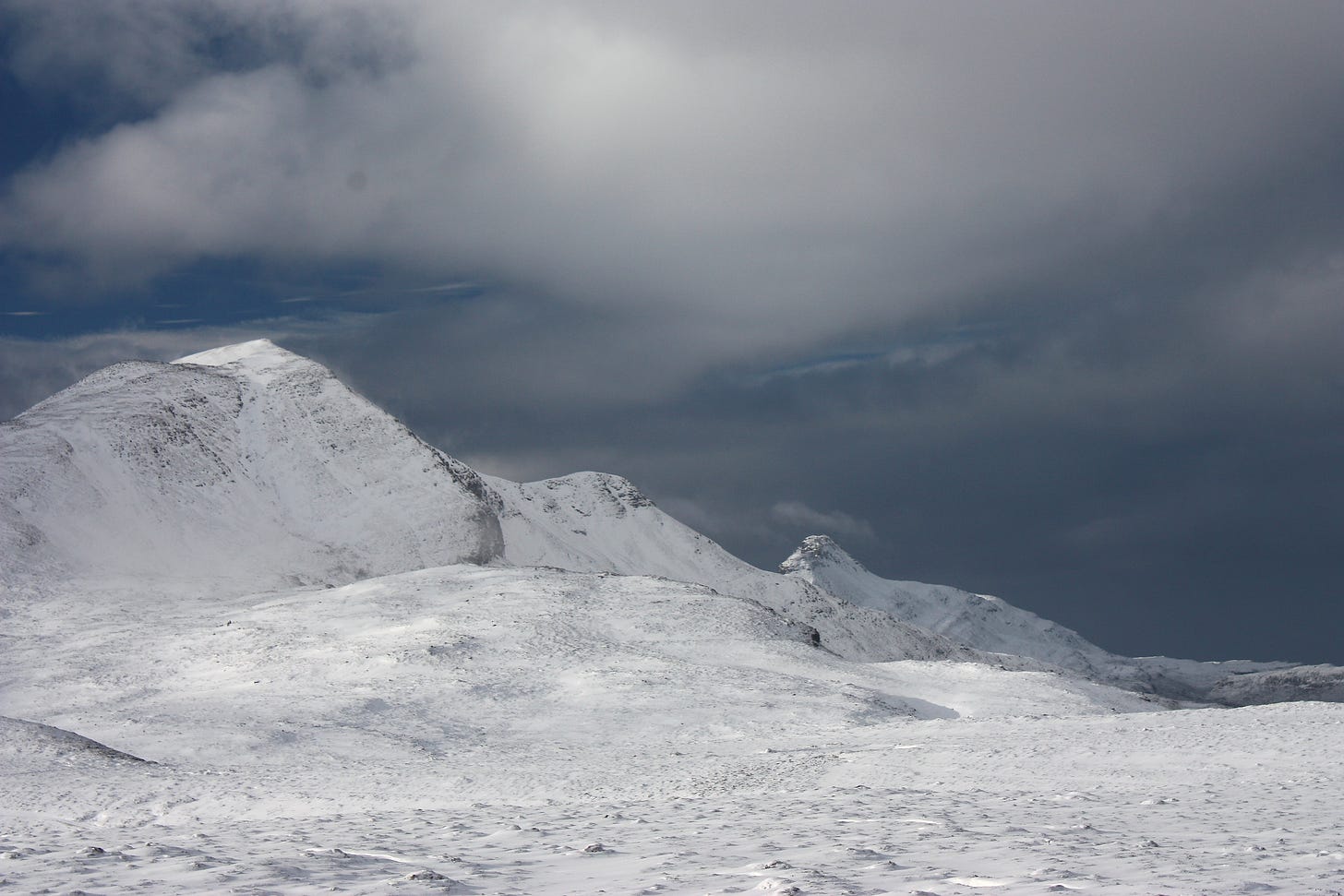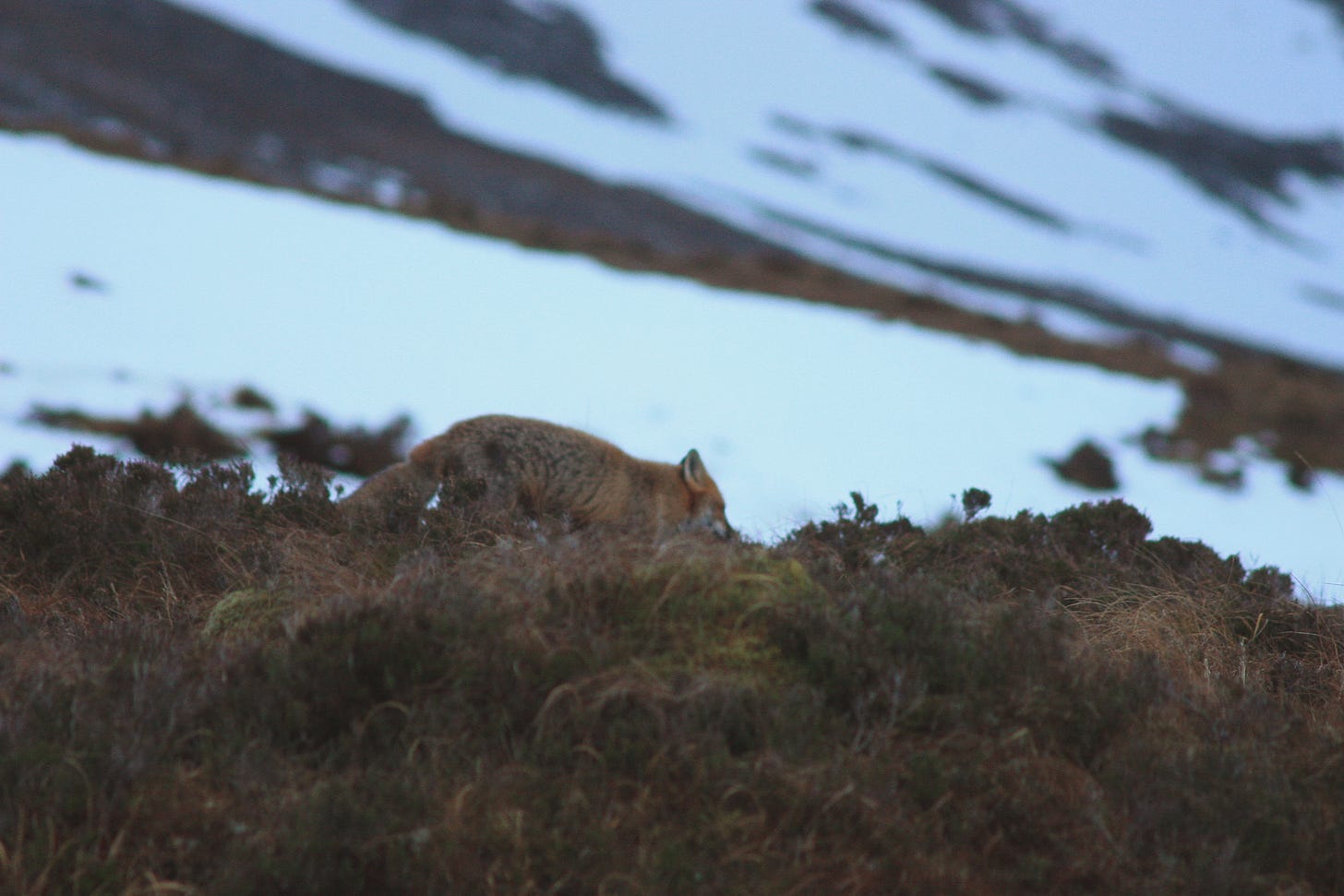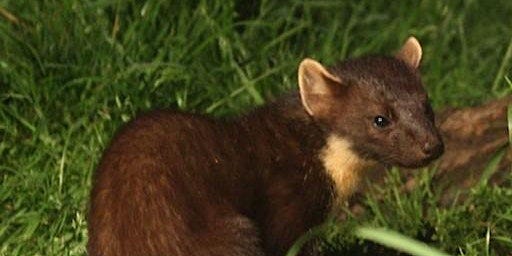Frozen Frame: My Photography Pursuit of the Elusive Vixen
Andy describes a winter encounter to remember

Winter has arrived with a vengeance. All my events have been cancelled and it is white outside. I should have known what was coming. Yesterday - before the temperatures plummeted, I saw a mixed flock of over 100 redwings (Turdus ilias) and fieldfares (Turdus pilaris) running about the croft frenetically searching for food, while chattering to all those who would listen. These visitors from the far north were obviously fleeing in front of the icy winds from the north.
I had been sitting at the computer for hours and, snow or no snow, I needed to get out. I grabbed the camera more out of habit than anything else. Little did I realise the wildlife photographic opportunity of the year was going to come my way. If only I had been prepared.
It was bitter outside. Neighbouring children, seemingly immune to the cold, were collecting icicles longer than a ten-year-old’s arm. Hordes of shivering starlings speaking Russian had collected on the roof tops longing for a good leatherjacket.
I decided to go for a walk and see if I could grab some good wildlife photos in the snow. Once outside I realised our garden was full of birds. It was not just the peanuts and bird seed I had previously put out that was attracting them, but the bag of Birds-eye frozen peas that I had unfortunately spilt earlier. Frozen legumes scattered the garden. And yes, our freezer is in the out shed! Though recently, I admit, we could have just as easily have kept the frozen fish fingers and choc ices under the flowering current bush in the garden without it thawing. Birds of all sorts were popping the frozen peas like a bunch of kids in a green Smartie factory. Blackbirds and thrushes, possibly from Scandinavia, a robin that looked continental and a male blackcap almost certainly all the way from Germany were sharing my frozen meal. Only a few chaffinches looked on in disgust. (Did you know that it is usually the female chaffinches that migrate in the winter -usually from further north and even Scandinavia- while the Scottish male tends to stay more local).
I trudged through the snow and ice and was delighted to come across a beautiful woodcock cowering in a ditch beside the road desperate for a frozen worm. His long thin beak designed for probing soft mud for worms looked as if it was frozen to his chest.
I had only gone a short distance further when a sparrowhawk appeared out of the grey, contouring the snowy landscape at great speed. I wondered what it was doing as it hurtled straight towards me and then past me. It was after the small bunch of twite and other finches that were sifting and the scattering off through the snow behind me. By now it was snowing horizontally into my face. I had stepped into a snowdrift deeper than my wellies and my feet were cold and wet.
It was under these trying circumstances that I first noticed her. Hunkered down behind a patch of frozen bracken fronds, the rusty red, yellowish fur of the female fox was unmistakeable. This was no mangy urban fox that lives in the cozy world of the inner-city, raiding dustbins and pizza parlours; this was the real MacCoy surviving on its wits in a harsh environment. Today that environment was testing its skills to the limit.

I could see in the distance the white-tipped bushy tail with its mix of red and black hairs. It was a young vixen in good condition. She was pawing the snow, perhaps trying to locate a field vole or wood mouse.
I fumbled to get my camera out of its case to capture this moment, and with thick gloves frantically tried to take off the lens cap. I dropped the lens cap and it disappeared into the snow. I decided to get it later. But she was too far away - I would need to change the actual lens.
I discarded the gloves in a hurry, snow in my eyes, trying and failing to shield the camera lens that was now covered with wet streaks. With increasingly freezing fingers I tried to focus but I could not even see the fox. The camera had fogged up! A huge raven landed on a fence post nearby and laughed.
Later on, I was to see the fox again. The sun had come and was radiant on the white snow highlighting the small bushes of eared willow. The slate grey sea pounded on the rocks in the background and Quinag was magnificent. Less than ten meters away it suddenly appeared on the path ahead of me. Unconcerned it allowed me to walk right up to it. Her orange eyes peered right into my soul. I could see the black hairs in her ears, her white throat and underbelly and then she turned casually and walked away. I had forgotten about the camera. It was too late for a photograph but while the image would never appear on the front cover of a BBC Wildlife magazine, it was burnt on my mind forever.

Andy Summers, North Highland's Senior Ranger for High Life Highland, is a dedicated naturalist with a deep understanding of the region's diverse ecosystems. His extensive experience in wildlife conservation and passion for preserving North Highland's pristine landscapes make him a vital asset. Andy's work encompasses wildlife observation, environmental education, and passing on a greater appreciation for the area's unique flora and fauna. His commitment to conserving North Highland's natural heritage is evident in his expertise and unwavering dedication.
Andy will be giving a talk in Pine Martens this week on 25th January
18:30-19:30
The Fascinating Lives of Highland Pine Martens
Thu, 25 Jan, 18:30 GMT Click to Book







